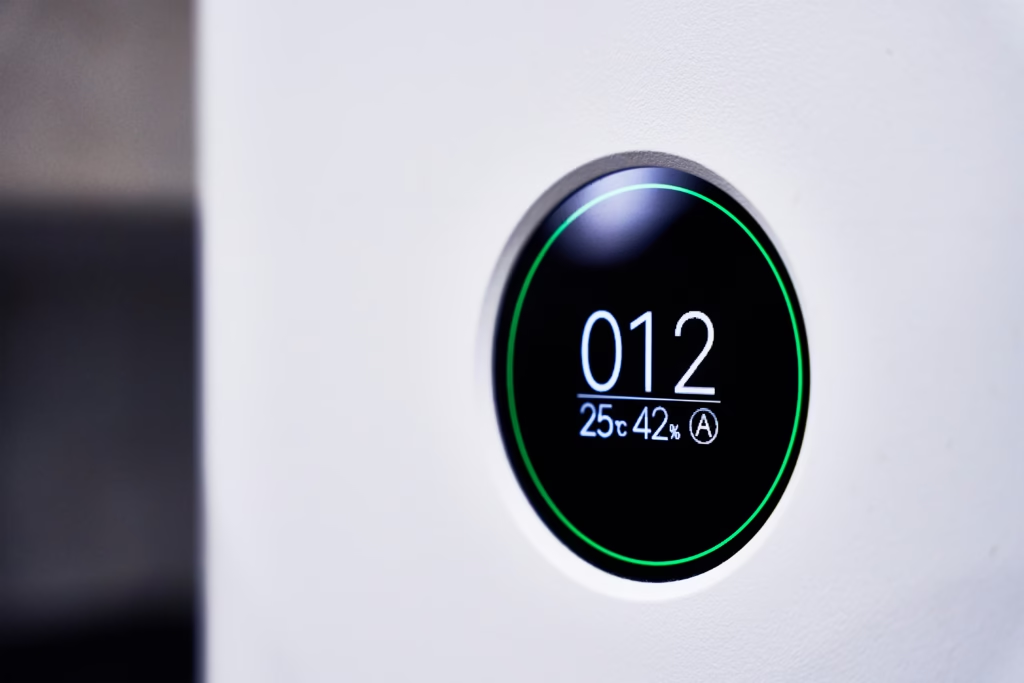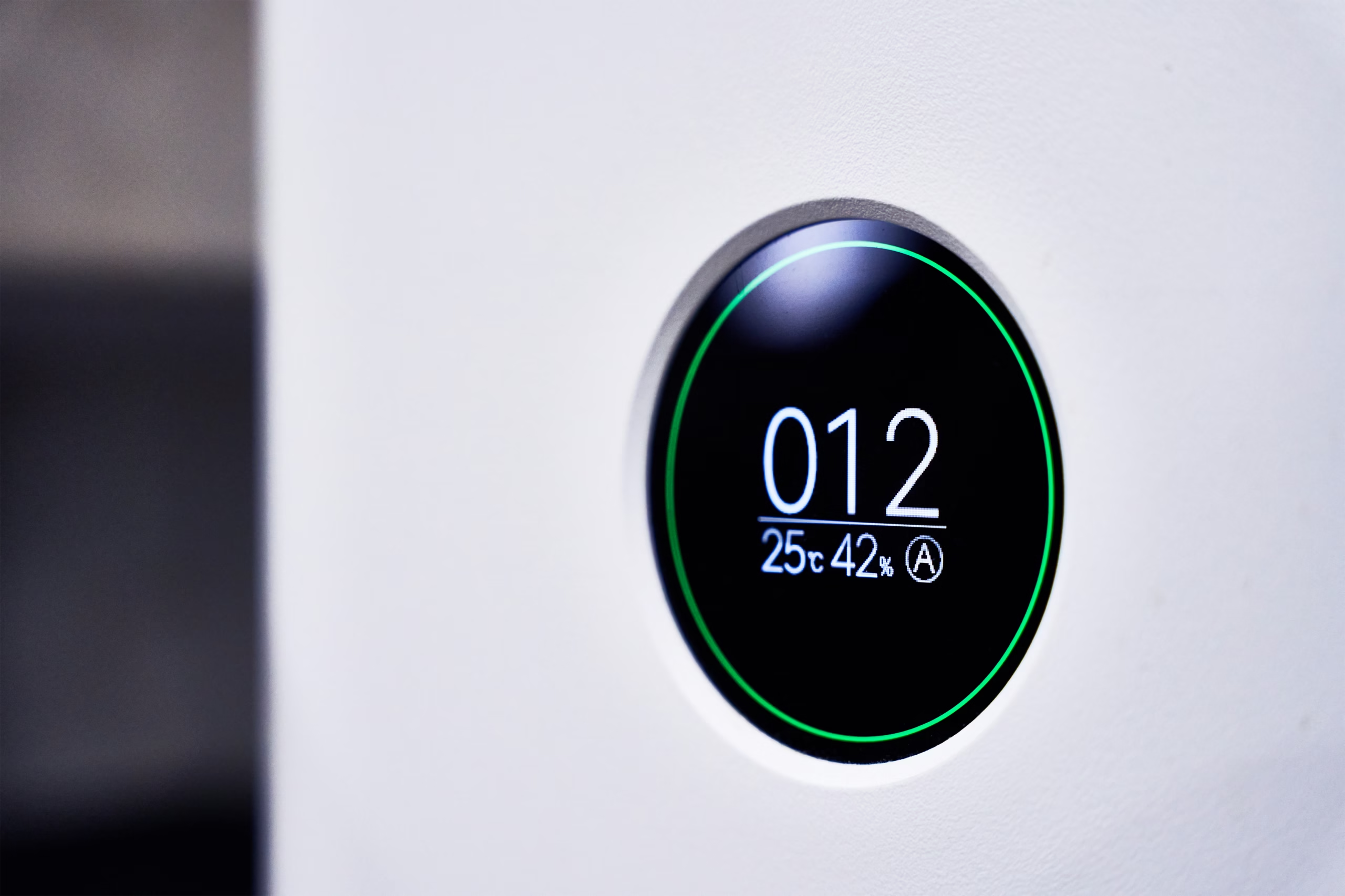A smart thermostat is an advanced version of the traditional thermostat, designed to optimize your home’s heating and cooling system. Unlike manual devices, smart thermostats use technology to learn your preferences, adjust temperatures automatically, and save energy. They connect to Wi-Fi, allowing you to control them through a smartphone app or even voice commands.
In a world where energy efficiency is critical, thermostats stand out as an easy and practical solution. They do more than just regulate temperature—they bring convenience, cost savings, and environmental benefits to your doorstep.
How Does a Smart Thermostat Work?
Smart thermostats function by combining sensors, algorithms, and connectivity. They monitor indoor temperatures, detect when you’re home or away, and adjust settings accordingly. Most models use machine learning to analyze your habits. For example, they know when you wake up or leave for work and fine-tune the temperature to match your routine.
Thanks to Wi-Fi connectivity, you can adjust your thermostats remotely. Before leaving the house, did you forget to turn down the heat? No problem. It only takes a few phone taps to complete.
The Connection Between Thermostats and Energy Efficiency
Although, energy efficiency is at the heart of thermostat technology. By reducing unnecessary heating or cooling, these devices help prevent energy waste. They ensure your HVAC system runs only when needed.

Additionally, thermostats often provide detailed reports on energy usage. This data helps you understand your consumption patterns and identify ways to cut down. These minor adjustments add up to substantial savings over time.
Top Features of a Smart Thermostat
Smart thermostats come packed with features that make them indispensable:
- Learning Capabilities: They adapt to your preferences over time.
- Remote Access: Use a smartphone to operate your thermostat from any location.
- Energy Reports: Get insights into your energy usage and savings.
- Voice Control: Many models integrate with smart assistants like Alexa or Google Assistant.
- Geofencing: the temperature is automatically adjusted according to your position.
However, these features not only make life more convenient but also drive substantial savings on energy bills.
Reducing Energy Waste One Degree at a Time
A large amount of residential energy is used for heating and cooling. Even a single degree of adjustment can make a noticeable difference in energy consumption. Although, Thermostats excel at making these small, precise adjustments automatically.
For instance, they lower the heat while you’re asleep or increase it just before you wake up. These minor changes are barely noticeable but have a big impact on reducing waste.
How a Smart Thermostat Saves You Money on Utility Bills
Smart thermostats save money by optimizing energy use. However, they eliminate the guesswork of manual adjustments and ensure your HVAC system runs efficiently.
For example, if you’re away at work, the thermostat lowers the temperature to avoid heating or cooling an empty home. Similarly, it can adjust settings during peak hours to reduce energy costs. Many users report saving 10-20% on their utility bills annually.
Environmental Benefits of Using a Smart Thermostat
By conserving energy, thermostats help reduce carbon emissions. When fewer fossil fuels are burned to generate electricity, the environment benefits. Installing a thermostat is a simple yet effective way to shrink your household’s carbon footprint.
Additionally, some models integrate with renewable energy systems, like solar panels, to further enhance sustainability.
Smart Thermostat vs. Traditional Thermostat: Key Differences
Traditional thermostats require manual adjustments and lack automation. In contrast, smart thermostats are intelligent, self-learning devices.
While a traditional thermostat keeps your home at a fixed temperature, a smart one adjusts dynamically. This adaptability leads to better comfort and efficiency. Though the upfront cost of a thermostat is higher, the long-term savings and convenience make it a superior choice.
Top Smart Thermostats to Consider in 2024
Look for features that fit your budget and lifestyle when selecting a thermostat. Here are some top picks:
- Google Nest Learning Thermostat: Best for learning capabilities.
- Ecobee Smart Thermostat Premium: Perfect for additional sensors and voice control.
- Honeywell Home T9: Great for multi-room temperature control.
Research these models and compare their features to find the perfect match for your home.
How to Install and Set Up a Thermostat for Maximum Savings
Installing a thermostat is relatively simple. Most models come with clear instructions. Here’s a quick guide:
- Turn off your HVAC system.
- Remove the old thermostat and label the wires.
- Attach the cables to your newly purchased smart thermostat.
- Secure the device and power up the system.
- Follow the app setup to complete installation.
Proper setup ensures your thermostat operates efficiently and delivers maximum savings.
Smart Thermostat Tips for Reducing Energy Waste
To maximize your smart thermostat’s functionality:
- Set temperature schedules based on your routine.
- Use geofencing to automate adjustments.
- Regularly check energy usage reports for insights.
- Pair your thermostat with energy-efficient HVAC systems.
Small adjustments, combined with the thermostat’s intelligence, can lead to substantial energy savings.
Real-Life Examples of Savings with Smart Thermostats
Many users share inspiring stories of their savings. For example, a family in Chicago reported cutting their heating bills by 25% after installing a smart thermostat. Another user mentioned saving over $200 annually on cooling costs in a hot climate.
These examples show how a small investment in smart technology can yield significant returns.
Challenges and Considerations When Adopting Smart Thermostats
While thermostats offer numerous benefits, they may not suit every home. For instance, older HVAC systems might not be compatible. Additionally, not all users are comfortable with the initial setup or learning curve.
Despite these challenges, most users find the benefits outweigh the drawbacks.
The Future of Smart Thermostat Technology
The future looks bright for thermostats. Upcoming advancements may include deeper integration with smart home systems, enhanced AI capabilities, and more sustainable materials.
Smart thermostats will probably get even more cost-effective and efficient as technology advances.

